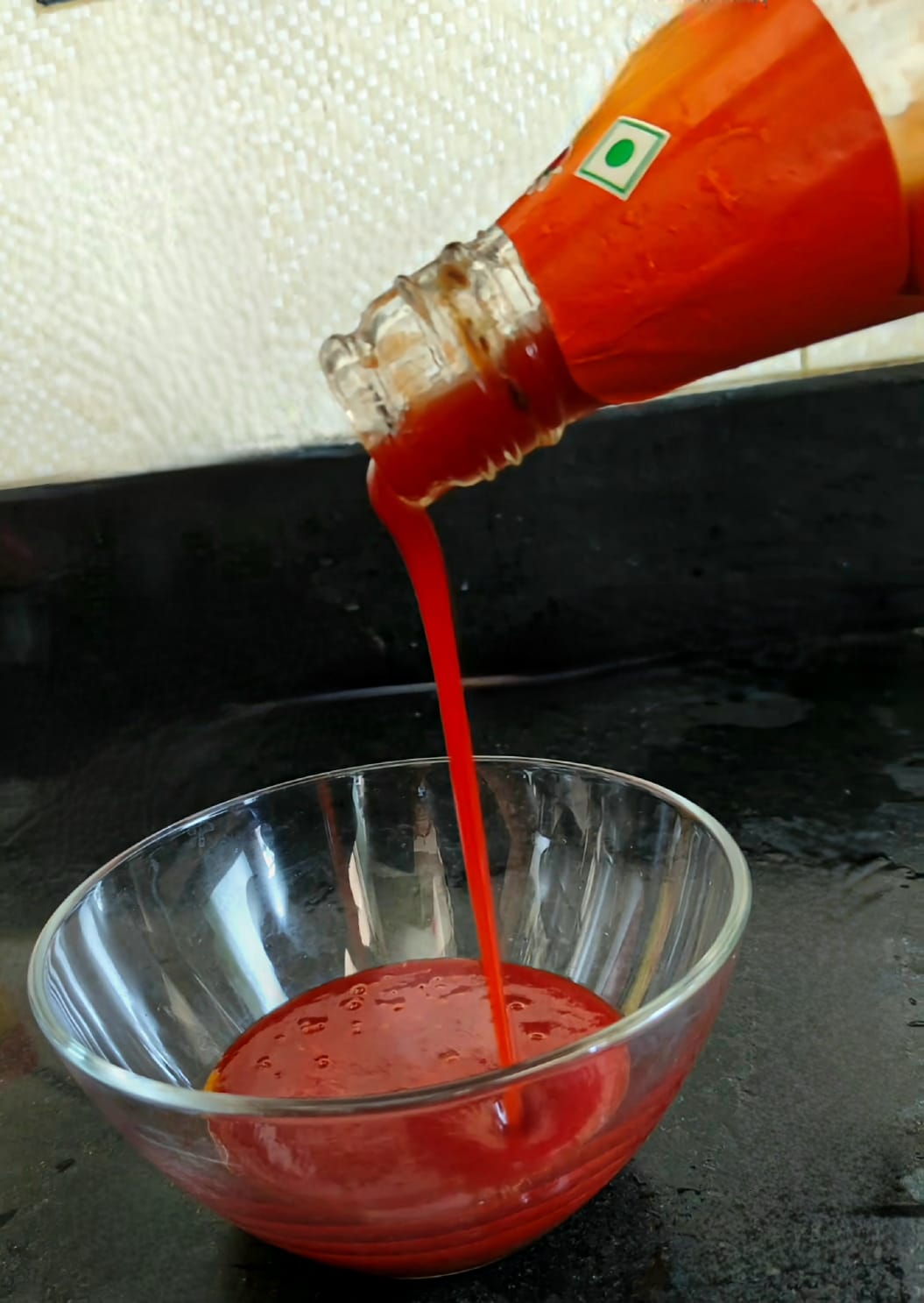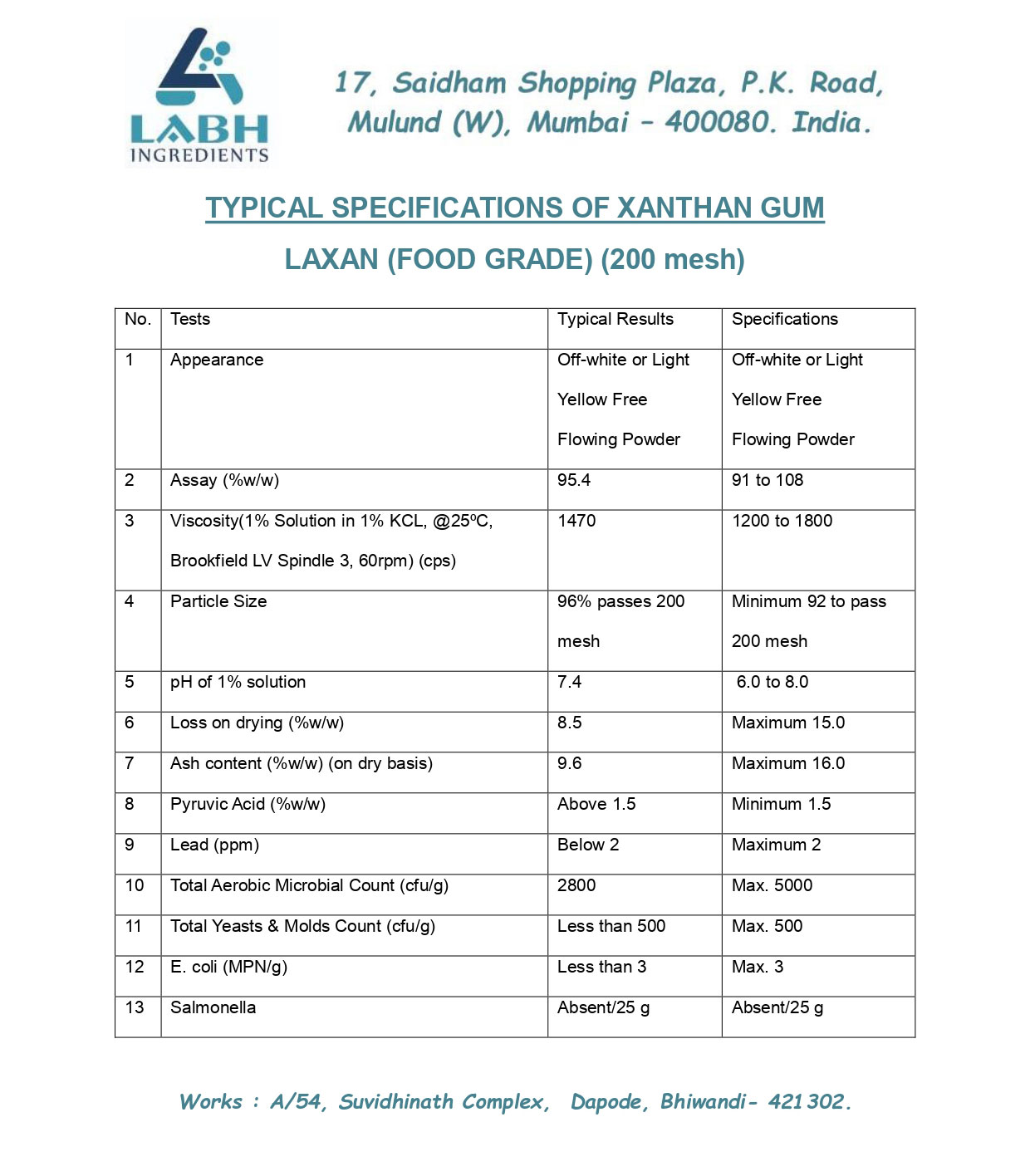Xanthan Gum (LAXAN) is a biological glue polysaccharide which allows excellent improvements in texture, taste, appearance by way of controlling the rheological properties of the food product by thickening, suspension, emulsification, adhesion & stabilization. This allows better food processing & obtain value addition. The quantity of pyro racemic acid group inside molecular chain end of xanthan gum is responsible for its performance. Xanthan gum is a long-chain macromolecule with more functional groups than general macromolecule and thus it shows unique performance under specific conditions. Multiple conformations of Xanthan gum in aqueous solution occur & thus it exhibits different features in different conditions.
Xanthan gum improves the commercial value of products like beverages, cakes, pastries, jelly, canned foods, sea foods, meat product processed products etc.

Xanthan Gum - Ketchup
1. Acid-resistant, salt-tolerant thickener & stabilizer
The stabilization effect of xanthan gum is attributed to its strong capability to withstand heat even up to sterilization temperatures. Thus, it is used in making various kinds of juice beverage, fruit juice concentrate, foods with seasoning (such as soybean sauce, oyster sauce, salad sauce).
2. Emulsification
As an emulsifier, LAXAN, prevents degradation/separation of O/W emulsions and thus is used to make various kinds of protein drinks, milk beverages etc. It improves the stability of proteins & prevents their sedimentation/separation. Xanthan gum is also used as foaming agent & foam stabilizer due to its emulsifying capability.

Xanthan Gum - Jelly
3. Emulsion stabilization
Xanthan gum is exploited as an emulsion stabilizer in frozen foods. Xanthan gums’ ability to adjust viscosity, allows its use in making ice creams, sorbets to achieve a unform, stable, soft & smooth product. During the production of various kinds of frozen foods, xanthan gum prevents water loss, delays aging & thus prolongs shelf-life of the product.
There is a relationship between viscosity & temperature of xanthan gum. During processing shear mixing processes decrease its viscosity & this is favorable. After the shear mixing is removed & aging starts, the viscosity of the system is regained. This property is beneficial in improving expansion rate & prevents generation of ice particles in ice cream, making the texture smooth & improved taste. It thus improves freeze-thaw stability of ice creams.
4. Filler agent
The xanthan gum is used as a stable high viscosity filler & is used in processing of various kinds of dessert, bread, biscuit, candy, etc. It helps in retaining shape & flavor of food products & allows industrial manufacture of traditional foods.
5. Addition to flour products
Xanthan gum, LAXAN, when added during production of fine dried noodles, noodles & instant noodles, it improves gluten power of the dough. The extruded dough sheet is tough & shows reduction in breakage after drying. It also improves taste & gives freshness & chewy mouthfeel. During frying of noodles they absorb less oil & thus reduces cooking oil consumption & costs.

Xanthan Gum - Bread
6. Other applications
Xanthan gum is also widely used in processing of meat food, fruits & vegetables for keeping them fresh.
1. Suspending & emulsifying property
Xanthan gum has good suspending & emulsifying agent.
2.Good water solubility
Xanthan gum has good water solubility at room temperature.

Xanthan Gum - Cakes

Xanthan Gum - Cake with Chocolate Glazing
3.Thickening property
Viscosity of 1% aqueous xanthan gum is almost 100 times that of gelatin. This thickening effect (high viscosity) at low concentrations allows it to be used in food products at low usage levels.
4.Pseudoplasticity
Aqueous solutions of xanthan gum exhibit high viscosity under static state or low shearing action. However, its viscosity will drop sharply under high shearing action, but the molecular structure remains unchanged. When the shearing action is eliminated, the original viscosity is recovered immediately. The pseudoplasticity of xanthan gum is highly efficacious in stabilization of liquid suspensions & emulsions.
5.Stability to temperature
The viscosity of xanthan gum remains unchanged with increase in temperature.
6.Stability to pH range
Viscosity of xanthan gum solution is unaffected between pH range of 5 to 10. When the pH is less than 4 or above 11, its viscosity shows slight change.
7.Salt stability
Xanthan gum solution can mix with many salt solutions like of sodium, potassium, calcium, magnesium salts etc. Even with very high salt concentrations, xanthan gum remains soluble, does not precipitate or floccuate & the viscosity of the system remains unchanged.
8.The stability for enzymatic hydrolysis
Double helix structure of xanthan gum gives its stability & it resists oxidation (anti-oxidation). Enzymes like as protease, amylase, cellulase, hemicellulases cannot degrade xanthan gum.
